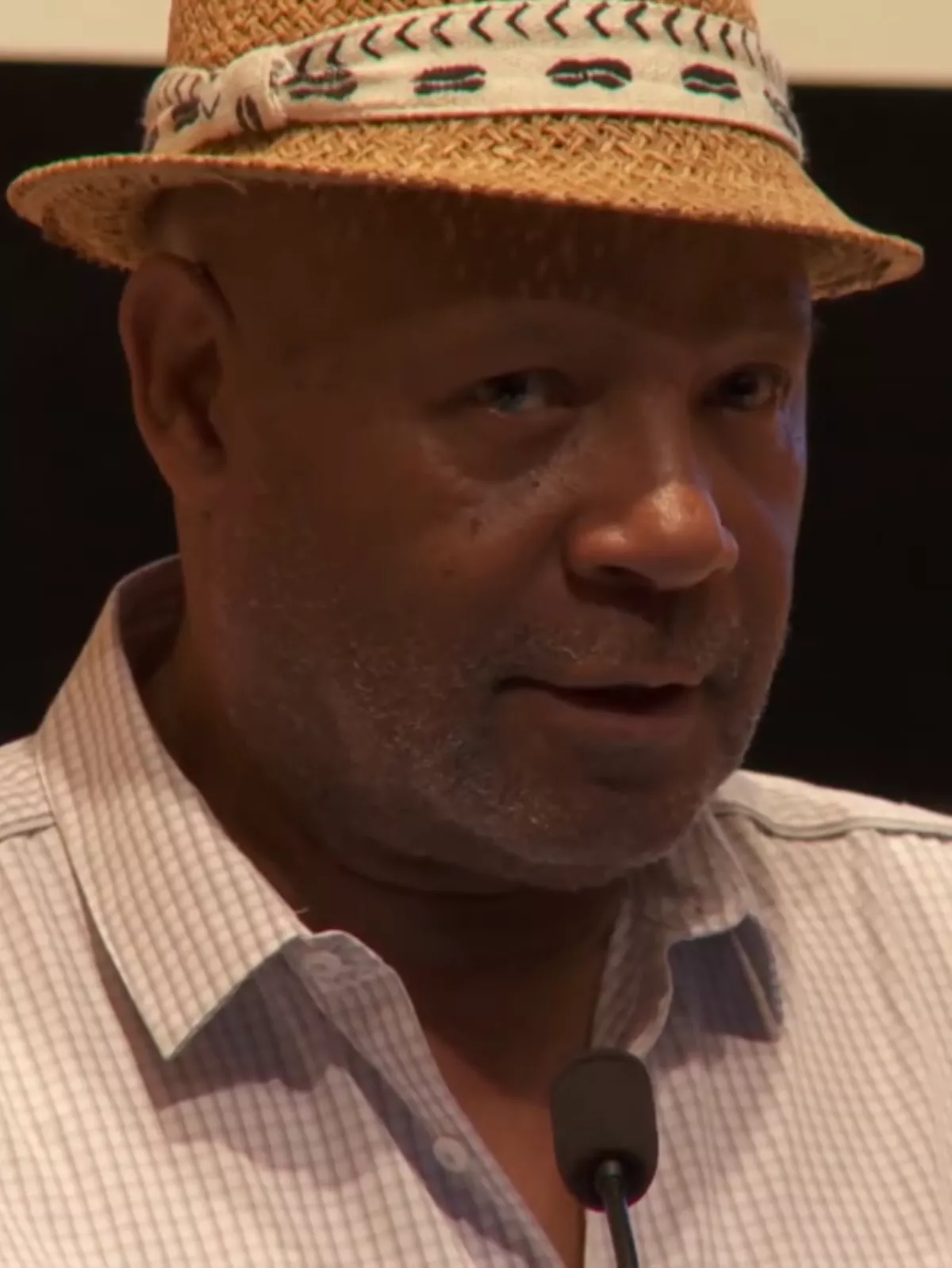 1.
1. Emory Douglas was born on May 24,1943 and is an American graphic artist.

 1.
1. Emory Douglas was born on May 24,1943 and is an American graphic artist.
Emory Douglas was a member of the Black Panther Party from 1967 until the Party disbanded in the 1980s.
Emory Douglas was born in Grand Rapids, Michigan, and, at age eight, moved to San Francisco, California.
In 1960, Emory Douglas studied graphic design at the City College of San Francisco.
Emory Douglas joined the college's Black Students' Association and worked closely with Amiri Baraka, a voice in the black arts movement, to design theater sets.
When discussing newspaper The Black Panther, formerly known as Black Panther Community News Service, Emory Douglas mentioned to the BPP co-founders that he could help improve the look of the paper.
Emory Douglas became the Revolutionary Artist and Minister of Culture for the BPP in 1967.
Todd Gitlin criticized Emory Douglas for using what Gitlin saw as antisemitic symbols in the caricatures he published in The Black Panther.
In 1970 Emory Douglas took part in the co-founding of a musical band called The Lumpen which he was credited with naming.
Emory Douglas chose the name "The Lumpen" after the Marxist idea of the lumpenproletariat.
Emory Douglas used the newspaper's popularity to incite the disenfranchised to action, portraying the poor with genuine empathy, not as victims but as outraged, unapologetic and ready for a fight.
Emory Douglas drew a lot of inspiration from third world struggles and used art as the primary method of propaganda and outreach.
Emory Douglas's graphics served to promote the Party's ideologies, which were inspired by the rhetoric of revolutionary figures such as Malcolm X and Che Guevara.
Emory Douglas's images were often very graphic, meant to promote and empower black resistance with the hope of starting a revolution to end institutionalized mistreatment of African Americans.
Emory Douglas worked at the black community-oriented San Francisco Sun Reporter newspaper for over 30 years after The Black Panther newspaper was no longer published.
Emory Douglas's post-activism focused on fostering dialogue around solutions that reduce violence while building stronger community ties.
Emory Douglas used art as a medium to inspire both introspection and action, highlighting the need to address the root causes of violence rather than solely focusing on its symptoms.
Emory Douglas's continued work in exhibitions and public discussions underscores his commitment to addressing internal and external challenges faced by marginalized communities.
Emory Douglas was the most prolific and persistent graphic agitator in the American Black Power movements.
Technically, Emory Douglas collaged and re-collaged drawings and photographs, performing graphics tricks with little budget and even less time.
Conceptually, Emory Douglas's images served two purposes: first, illustrating conditions that made revolution seem necessary; and second, constructing a visual mythology of power for people who felt powerless and victimized.
Emory Douglas maintained poor people's dignity while graphically illustrating harsh situations.
Emory Douglas is retired but does freelance design work discussing topics such as Black on Black Crime and the prison industrial complex.
Emory Douglas feels he must continue to educate through his work.